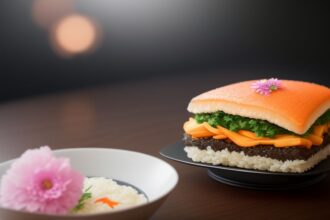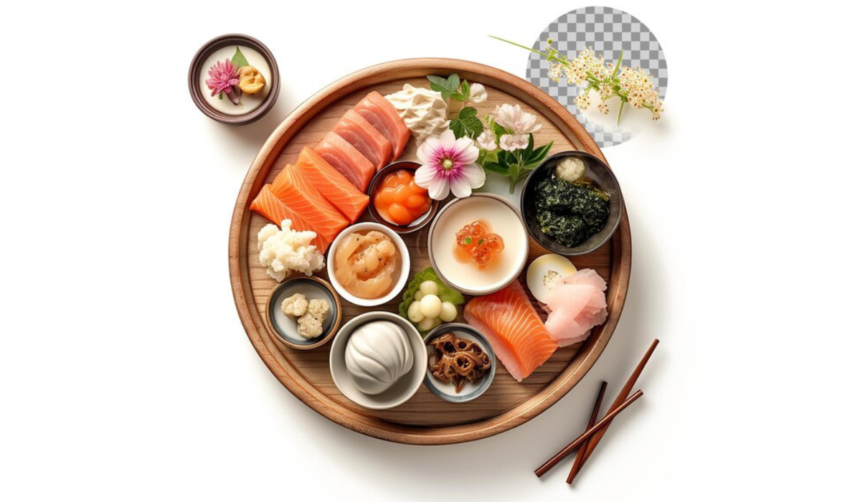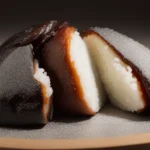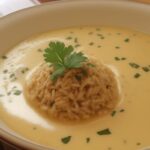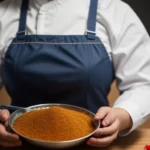The Art of Kaiseki: A Guide to Japan’s Elegant and Exquisite Culinary Tradition
Introduction to Kaiseki
Kaiseki is a traditional Japanese culinary art that has been practiced for centuries. It is a multi-course meal that is meticulously prepared and beautifully presented, with each dish showcasing exquisite flavors and textures. Kaiseki is not just a meal, but a complete sensory experience that reflects the season, the region, and the skill of the chef.
History of Kaiseki
Kaiseki originated in the Japanese tea ceremony, where simple meals were served to accompany the tea. Over time, kaiseki evolved into a formal dining experience that combines elements of art, culture, and cuisine. The tradition of kaiseki has been passed down through generations of chefs, who continue to refine and innovate on this ancient culinary practice.
Elements of Kaiseki
Kaiseki is characterized by its attention to detail and the use of seasonal ingredients. Each course in a kaiseki meal is carefully planned and executed, with a focus on balance, harmony, and presentation. The chef selects the freshest and highest quality ingredients, and then meticulously prepares each dish to bring out its natural flavors and textures.
The Structure of a Kaiseki Meal
A traditional kaiseki meal typically consists of several courses, each with its own specific purpose and presentation. The meal begins with a series of small appetizers, known as “sakizuke,” which are meant to awaken the palate and prepare the diner for the rest of the meal. This is followed by a soup course, a sashimi course, a grilled dish, a simmered dish, and a rice dish. The meal concludes with a dessert, usually a small sweet treat to cleanse the palate.
Seasonality in Kaiseki
One of the key principles of kaiseki is the use of seasonal ingredients. The chef selects ingredients that are at their peak freshness and flavor, reflecting the changing seasons and the bounty of nature. This seasonal approach ensures that each dish is vibrant, flavorful, and in harmony with the natural world.
Presentation in Kaiseki
Presentation is a crucial aspect of kaiseki, with each dish meticulously arranged to showcase the ingredients and enhance the dining experience. The chef pays careful attention to color, texture, and shape, creating visually stunning dishes that are almost too beautiful to eat. The presentation of a kaiseki meal is meant to evoke a sense of harmony and balance, engaging all of the senses and creating a memorable dining experience.
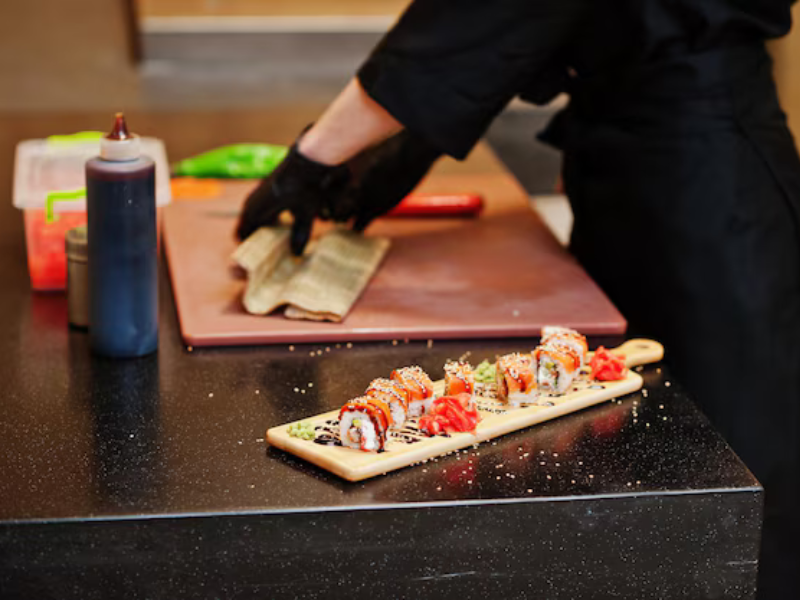
The Role of the Chef in Kaiseki
The chef is the heart and soul of a kaiseki meal, responsible for selecting the ingredients, planning the menu, and executing each dish with precision and skill. The chef must have a deep understanding of traditional Japanese cooking techniques, as well as a creative flair for innovation and experimentation. A kaiseki chef is not just a cook, but an artist and a master of his craft.
The Importance of Seasoning in Kaiseki
Seasoning is a critical element of kaiseki, with the chef using a delicate touch to enhance the natural flavors of the ingredients. Unlike in Western cuisine, where heavy sauces and bold seasonings are common, kaiseki relies on simple and light seasoning to allow the purity of the ingredients to shine through. The chef may use a variety of traditional Japanese seasonings, such as soy sauce, miso, and dashi, as well as fresh herbs and garnishes to enhance the flavor of each dish.
Tea in Kaiseki
Tea is an integral part of the kaiseki experience, with many kaiseki meals being served in conjunction with a traditional Japanese tea ceremony. The tea serves as a palate cleanser between courses, refreshing the diner and preparing them for the next dish. The chef may also incorporate tea into the meal itself, using it as a flavoring agent or as a subtle accompaniment to enhance the overall dining experience.
The Role of Nature in Kaiseki
Nature plays a central role in kaiseki, with the chef drawing inspiration from the natural world to create dishes that reflect the changing seasons and the beauty of the landscape. Ingredients are often foraged from the local environment, such as mushrooms, wild herbs, and fresh seafood, to capture the essence of the region and create dishes that are in harmony with nature. The presentation of the meal may also be influenced by nature, with dishes arranged to mimic the colors and textures of the natural world.
The Influence of Zen Buddhism on Kaiseki
Zen Buddhism has had a profound influence on kaiseki, with the principles of simplicity, mindfulness, and harmony permeating every aspect of the culinary tradition. The Zen philosophy emphasizes the importance of being present in the moment, appreciating the beauty of the world around us, and finding peace and tranquility through the act of mindful eating. Kaiseki reflects these principles, with the chef taking great care to create dishes that are not only delicious but also nourishing for the body and soul.
The Evolution of Kaiseki
While kaiseki is a traditional culinary art with deep roots in Japanese culture, it has also evolved over time to incorporate modern influences and techniques. Chefs are constantly experimenting with new ingredients, flavors, and presentations, pushing the boundaries of kaiseki and creating innovative and creative dishes that still honor the traditions of the past. This fusion of tradition and innovation is what makes kaiseki such a dynamic and exciting culinary tradition.
Sustainability and Kaiseki
Sustainability is an important consideration in kaiseki, with many chefs promoting the use of locally sourced, organic, and seasonal ingredients to reduce the environmental impact of their meals. By supporting small-scale farmers and producers, kaiseki chefs are not only preserving traditional farming practices but also ensuring the continued availability of high-quality ingredients for future generations. Sustainability is not just a trend in kaiseki, but a core value that guides the practice and philosophy of the culinary tradition.
Conclusion
Kaiseki is not just a meal, but a work of art, a celebration of nature, and a reflection of Japanese culture and tradition. From the meticulous preparation and presentation of each dish to the seasonal ingredients and traditional techniques used, kaiseki is a culinary experience like no other. Whether enjoyed in a formal restaurant setting or as part of a traditional tea ceremony, kaiseki offers a rare opportunity to savor the beauty and flavors of Japan in a way that is both elegant and exquisite.
FAQs about “The Art of Kaiseki: A Guide to Japan’s Elegant and Exquisite Culinary Tradition”
- What makes “The Art of Kaiseki: A Guide to Japan’s Elegant and Exquisite Culinary Tradition” a valuable resource for food enthusiasts? “The Art of Kaiseki” provides a comprehensive guide to Japan’s renowned culinary tradition, offering insights into the history, philosophy, and techniques behind kaiseki cuisine. It’s a must-read for anyone interested in Japanese food culture.
- What is kaiseki cuisine, and why is it considered an art form in Japan? Kaiseki is a traditional Japanese multi-course meal that emphasizes seasonality, harmony, and balance. It’s meticulously prepared to showcase the finest ingredients and culinary techniques, making it an art form that reflects Japan’s aesthetic sensibilities.
- Which aspects of kaiseki are covered in this book? This book covers various aspects of kaiseki, including its origins, principles, components of a typical meal, seasonal variations, and the cultural significance of kaiseki in Japanese society.
- Are there recipes included in “The Art of Kaiseki,” and are they suitable for home cooks? While “The Art of Kaiseki” may include some recipes, its primary focus is on providing insights into the philosophy and techniques of kaiseki cuisine rather than offering practical recipes. However, it may still inspire home cooks with its principles of seasonality, presentation, and flavor combinations.
- How does “The Art of Kaiseki” showcase the elegance and sophistication of Japanese culinary culture? “The Art of Kaiseki” showcases the elegance and sophistication of Japanese culinary culture by delving into the meticulous preparation, presentation, and rituals associated with kaiseki dining. It offers readers a deeper appreciation for the artistry and craftsmanship that define Japanese cuisine.
Advantages:
- Elegance and sophistication: The title “The Art of Kaiseki: A Guide to Japan’s Elegant and Exquisite Culinary Tradition” suggests a refined and sophisticated culinary experience, immediately capturing the reader’s interest.
- Cultural immersion: By focusing on kaiseki, a traditional multi-course Japanese meal, the title offers readers insights into the cultural, seasonal, and aesthetic aspects of Japanese cuisine, fostering a deeper appreciation for Japanese culture.
- Gastronomic exploration: Readers can anticipate learning about the meticulous preparation, presentation, and symbolism of kaiseki cuisine, providing them with a comprehensive understanding of this revered culinary tradition.
- Practicality: By providing a guide to kaiseki, the title appeals to readers interested in experiencing authentic Japanese dining experiences, offering them practical tips and insights to appreciate kaiseki meals.
- Inspiration for dining: The title may inspire readers to seek out kaiseki dining experiences or attempt to recreate kaiseki-style meals at home, encouraging culinary exploration and appreciation of Japanese cuisine.
Disadvantages:
- Niche appeal: Kaiseki cuisine may be unfamiliar to some readers, limiting the appeal of the title to those specifically interested in Japanese culinary traditions.
- Limited accessibility: Kaiseki meals are typically served in specialized restaurants and may not be readily available outside of Japan or major culinary hubs, limiting the practicality of the information for some readers.
- Complexity: The intricate nature of kaiseki cuisine may be daunting for readers unfamiliar with Japanese culinary traditions, potentially making the content challenging to understand and implement.
- Dietary restrictions: Kaiseki meals often include raw fish, seafood, and other ingredients that may not be suitable for individuals with dietary restrictions or preferences, potentially alienating some readers.
- Cultural appropriation: Without proper context and understanding, celebrating kaiseki cuisine could risk appropriating cultural elements without acknowledging their significance or respecting their origins.



